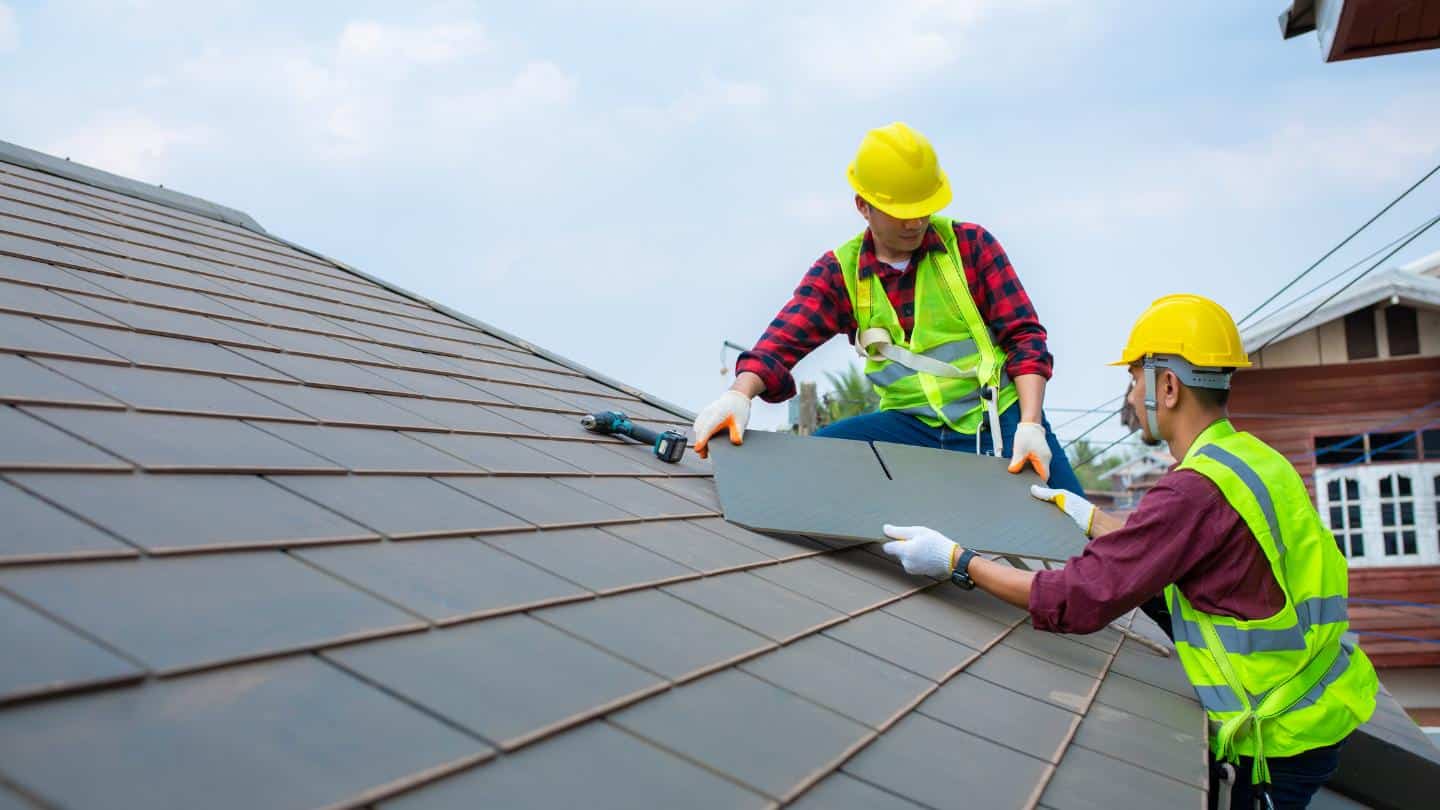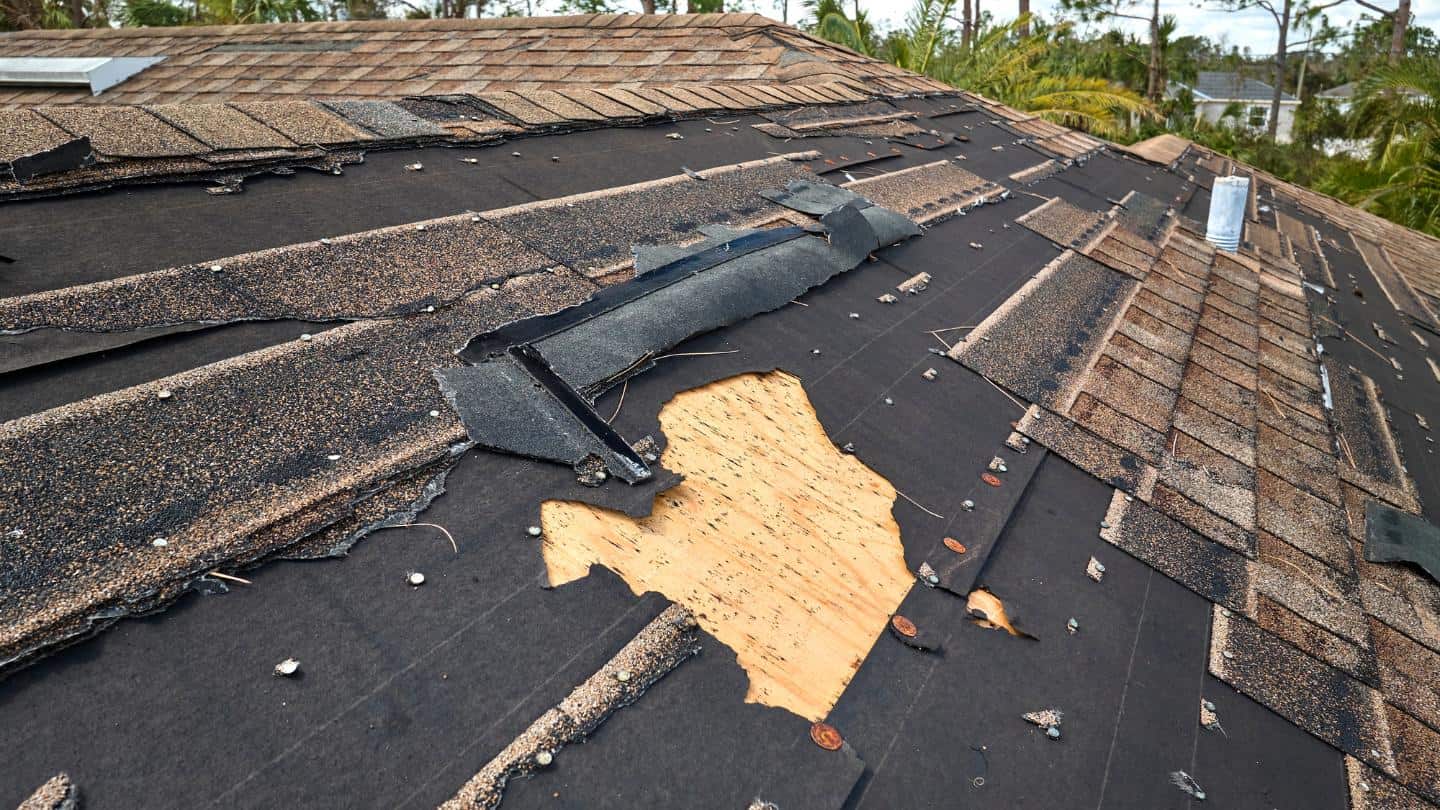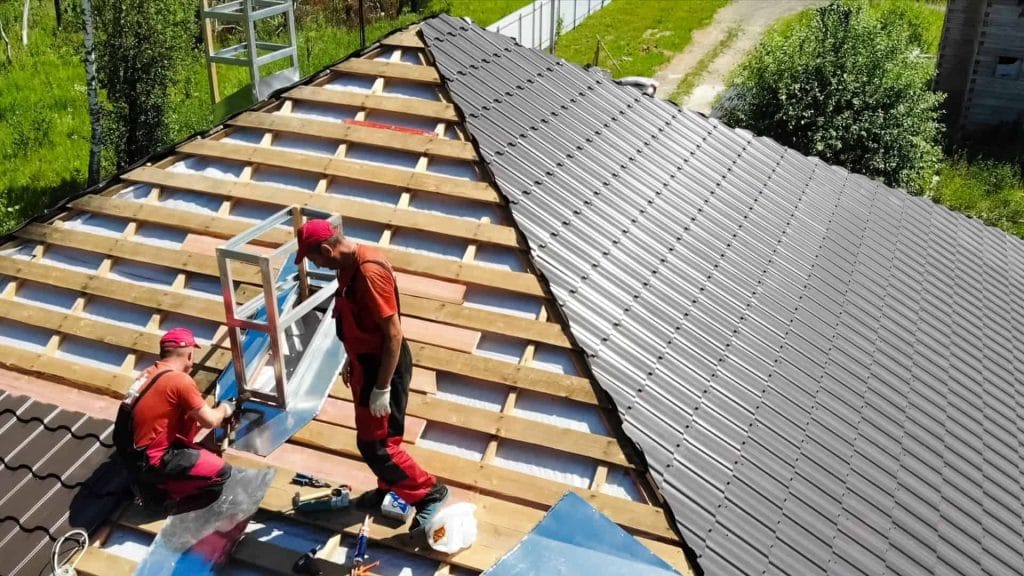Your roof is your home’s first line of defense against the elements. It’s also an integral part of its structure and contributes significantly to its overall look. However, like everything else in your house, it won’t last forever. There are signs you need to watch out for that indicate it may be time for a new roof this year.
It’s easy to overlook these warning signs until an issue becomes too prominent or costly to ignore. But being proactive can save you from unnecessary stress and expensive repairs down the line. From spotting curling shingles to identifying troublesome roof valleys, we’ll guide you through five key indicators that suggest your roof may be past its prime.
Recognizing the Age of Your Shingles
You’ve got to keep a keen eye on the age of your shingles, as it’s one of the most telling signs you might need a new roof this year. Remember that shingle durability varies depending on the material used and environmental conditions. Asphalt shingles, for instance, have an average lifespan of about 15-30 years while metal or tile shingles can last up to 50 years or more. If your roof is nearing the end of these periods, chances are high that it’s time for replacement.
Check out the condition and color consistency of your shingles too. Over time, harsh weather conditions may cause them to buckle or curl at the edges; that’s a clear sign they’re past their prime. Material lifespan isn’t simply about how long they stay on your roof but also how well they protect you from external elements throughout those years. So if you see any signs of wear and tear, don’t hesitate to call in a professional for advice because waiting could only lead to more significant problems down the line.
Spotting Curling or Buckling Shingles

If your home’s shingles are curling or buckling like a wave about to crash, it’s high time to consider a replacement. This is not merely an aesthetic issue; it’s a clear sign that your roof has sustained significant damage over time. A thorough shingle material analysis can give you an accurate picture of the severity of the problem. Certain materials, such as asphalt or wood, tend to buckle and curl when they’ve exceeded their lifespan or been exposed to severe weather conditions.
The impact of your roof slope also plays a crucial role in this scenario. If you have a steep-sloped roof, the odds are higher that water hasn’t been draining properly and has caused damage over time. Conversely, low-sloped roofs are more susceptible to wind damage which could lead to curling and buckling. Taking these factors into account while inspecting your roof can help determine if you need immediate action or if repairs could suffice for now. Always remember: ignoring these signs could lead to bigger issues down the line such as leaks or structural instability.
Identifying Roof Valleys
One of the most critical aspects to consider when assessing your home’s roof health is the condition of its valleys – these are the sections where two slopes meet and form a sort of ‘V’ on your roof. The valley maintenance importance can’t be overstated as this area is prone to water collection and snow accumulation, which can lead to leaks or even structural damage if not maintained properly. It’s in these areas that rainwater flows down and gets directed into the gutters, meaning they bear more wear-and-tear than other parts of your roofing system. Therefore, any signs of wear, like missing shingles or cracks in this area should warrant immediate attention.
Assessing valley damage isn’t something you should take lightly; it could spell out a major problem for your home’s overall integrity. If you notice loose material or wear around chimneys, pipes, and other penetrations, it’s often a sign that your valleys need repair. Moreover, wet spots along the seams might indicate that water is making its way underneath the shingles – an issue that may require replacing those shingles or potentially investing in a new roof altogether. Remember, your roof’s health starts with its valleys; make sure they’re well-maintained throughout the year.
Checking for Shingle Granules in the Gutters
Checking your gutters for shingle granules might feel like a mundane task, but it’s critical to the overall health of your home. This is because granule loss causes significant damage to your roof’s protection against elements such as sun, rain and wind. These tiny bits that resemble coarse sand are more important than you’d think; they protect the asphalt layer underneath your shingles from UV rays and extreme weather conditions. Seeing an excessive amount of them in your gutters could mean the protective barrier on your shingles is wearing away, which may necessitate a new roof.
Now that you’re aware of the potential damage caused by granule loss, let’s discuss some gutter maintenance tips. Regularly cleaning out your gutters not only prevents water damage to your home but also allows you to check for these telltale signs of roof decay. Use a ladder and gloves for safety when inspecting and clearing debris from the gutters. If you find a substantial amount of granules during this process, don’t ignore it – this could be one of those warning signs indicating that you need a new roof this year.
Assessing the Condition of Chimney Flashing

Taking a good look at your chimney flashing’s condition is another must-do on your home maintenance checklist. The flashing is the thin piece of material that prevents water from seeping into the place where the chimney meets the roof. Flashing material types vary, with some common ones being metal, rubber, and roofing felt. Each type has its advantages and drawbacks in terms of durability, cost, and weather resistance.
Assessing how well your chimney flashing was installed can also give you an idea if it’s time for a new roof. Flashing installation methods are crucial to preventing leaks and damage. For instance, if it was hastily tacked on or improperly sealed during the last roof installation, water could easily find its way inside your home causing significant damage over time. Therefore, contact a professional roofer to inspect and confirm whether your existing flashing requires repair or replacement.
Locating Daylight Through Roof Boards
If daylight is peeking through your roof boards, it’s high time to pay attention. This is a crucial sign that your roof is in dire need of replacement. Daylight penetration causes various problems including potential leaks and weakened structural integrity. If you notice a flicker of light in your attic during the daytime or see sunlight streaming through the rafters, that’s an immediate red flag indicating roof board deterioration.
You should also be aware that daylight isn’t the only thing to worry about when this happens. With light comes heat and cold air too, which can lead to issues with temperature regulation inside your home. Furthermore, if water can easily find its way into your house through these gaps as well, causing further damage. Therefore, don’t ignore this warning sign; instead, consider getting a new roof as soon as possible to prevent more serious problems down the line.
Discovering Higher Energy Bills
Suddenly, your energy bills are skyrocketing and it’s not due to a rate hike or an unusually hot summer. You might wonder what could possibly be causing this increase in cost. Well, one culprit could be right over your head – literally! A worn-out or damaged roof can lead to insulation inefficiency, which means your home isn’t retaining heat or cool air as effectively as it should. This forces your HVAC system to work overtime, trying to maintain a comfortable temperature indoors despite the outside weather conditions.
Insulation inefficiency is more than just an annoyance; it’s a clear sign that you may need a new roof. When the roofing materials have deteriorated significantly, they lose their ability to provide proper thermal protection for your home. As a result, you’ll find yourself cranking up the heat in winter and blasting the AC in summer just to stay comfortable. That leads straight down the path of HVAC overuse — and higher energy bills each month as a consequence. So if you notice this worrying trend on your utility statements, consider getting your roof inspected right away for possible replacement needs.
Conclusion
In summary, don’t ignore these warning signs. Your roof’s age, curling shingles, roof valleys, granules in the gutters or compromised chimney flashing are all red flags. They’re screaming that your roof needs attention.
Furthermore, if you’ve noticed daylight through your roof boards or a sudden spike in energy bills, it’s time to act. Don’t wait until a small issue becomes a major problem. You might just need a new roof this year!














